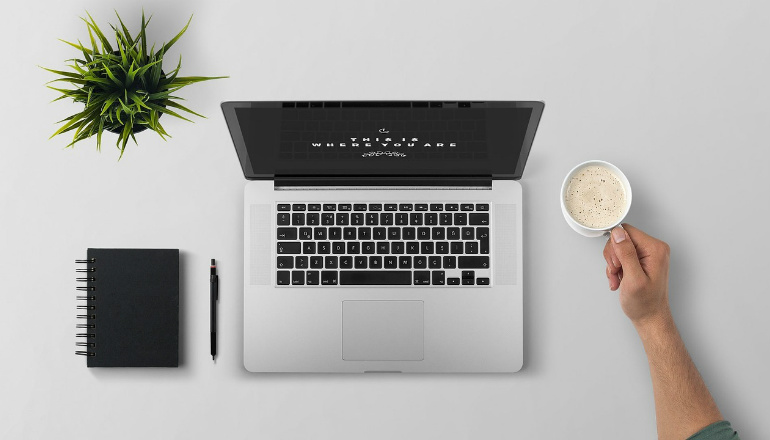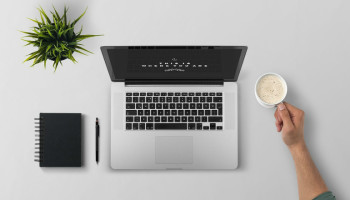 Reading Time: 5 minutes
Reading Time: 5 minutesIt’s hardly absurd to assume our carefully cultivated exercise habit will have protective effects, shielding us against the pitfalls of sedentary work — i.e. all those hours we spend sitting at our desk, car, and couch each day.
After all, we put valuable time into exercise. The mindfulness we put into it should matter.
Right?
It does. A commitment to, and a love for, the experience of physical movement is a wonderful, long-term investment in your body and mind.
And yet, setting time aside for exercise is not the whole answer. In fact, no matter how physically active a person might be, the inactive hours carry hidden dangers, and that’s what we’ll talk about here.
First, let’s look at what sitting time does to our bodies. Then, we’ll look at how we can take care of our health during that time we’re getting our desk work done — and you may be surprised how easy it can be to put some moments of motion into your busy schedule.
What Sitting Too Much Does to Us
1. Makes Us Insulin-Resistant
Sitting is a resting mode. It makes our bodies feel as though we’re asking them to store energy. Our blood responds by storing glucose. This means our body starts to resist the hormone insulin. You probably see where we’re going here: insulin resistance is a key factor in the onset of pre-diabetes and type 2 diabetes.
You can spend fewer consecutive minutes sitting simply by standing up. By using an adjustable workstation, a podium, or a desk converter, you can dramatically bolster your body’s sensitivity to insulin — at least as well as you can through exercise.
2. Brings Heartache
Moving during our day and not just at the gym is vital for preventing cardiovascular disease, heart attacks, and angina. The Mayo Clinic informs us of a study comparing two groups of people:
- One made it a habit to hang out with their televisions and online entertainment for fewer than two hours a day.
- The other group spent more than four hours daily being entertained in front of a screen.
The longer sitters experienced about a 125% increased risk of chest pain or heart events. Now, that fact is something to sit with.
3. Makes Us Susceptible to Cancer
A 2011 study found that some 173,000 U.S. cancer cases each year could be linked to sedentary lifestyles. This included more than 40,000 cases each of colon and breast cancer.
This study also carried some uplifting news. By frequently interrupting sitting time with a few minutes of motion, we can lower this cancer risk. Just one or two minutes of movement decreases the molecules in the body connected with the cancers.
4. Takes Away Our Natural Fat-Burning Power
The lipoprotein lipase enzyme breaks down certain fats in the blood. But when you sit in a chair for a few hours, these fat-burning enzymes slack off. Sit at an office all day? Their activity plummets.
5. Shortens Our Lives
A sobering study in the Archives of Internal Medicine involved 200,000 people aged 45 and up. It took into account their various exercise habits and health factors. The study found that people who sat for eleven-plus hours a day were 40% more likely to die in three years, in contrast with people whose daily sitting time added up to no more than four hours.
If eleven hours sounds like something you’d never do, consider the time at your desk, plus the time on your commute, plus your time at home. What does that add up to for you?
The Simple Solutions for Sitting Too Much
Yet again in 2017, the Annals of Internal Medicine came out with research confirming what most of us knew: sitting takes a toll on a body. The study involved nearly 8,000 people. To ensure accuracy, the researchers used activity trackers to examine the participants’ sitting and moving time. When the researchers looked at participants’ medical data from 2009 to 2013, they discovered a couple key things:
- The total of the subjects’ sitting time impacted their health.
- How long they typically sat at a stretch made for a higher mortality risk.
But the solution offered by the researchers was surprisingly simple:
- Stop sitting for so long at a time.
- Get up and move every half-hour.
According to the research, people who got up every thirty minutes or even more frequently measurably reduced their mortality risk. So, with that in mind, it becomes very easy to blend movement into our day and take major steps toward protecting our health.
Here are four ideas you can try today:
- Step away from your desk every half hour. The 2017 study indicated the frequency of getting up from a seated position is really important.
- When talking on the phone, pace the room or hallway. Walking will engage four times as much physical energy as sitting.
- Embrace mini-exercise routines. Set a timer and do ten squats at the top of every hour. Get up and stretch at the bottom of every hour.
- See the glass as half-full. No, really. Get up and get half a glass of water. This will have you getting up more frequently for refills (and bathroom breaks will suddenly be a good thing, too).
Special Bonus: Movement as a Mood Enhancer
Your body will experience a number of positive effects when you become mindful of your intra-day movement. You’ll generally reduce the stress on your back, wrists, and feet. You’ll keep your metabolism buzzing. And your thought process will become stronger and clearer.
There’s science behind the increased creativity you’ll experience when you blend movement into your desk work. The science has to do, again, with insulin. When you regularly interrupt your seated time with movement, you bolster your blood’s insulin sensitivity, and this is linked to mental clarity and uplifted mood. In fact, it’s proven to help alleviate symptoms of depression.
So, when you’re feeling the stress of work or feeling a creative block, do yourself a double benefit and go for a walk. Even a short walk will clear your mind, help your body, and reset your mood.
Movement for Our Bodies and Minds
The research, summed up, tells us it’s important to move and stand more while we work or watch our screens. And while that may seem daunting, blending movement into our day can be a straightforward, do-it-yourself practice that addresses or prevents so many health-related issues.
Can the studies we’ve mentioned account for all past or current lifestyle factors of the participants? No, but when we look at the research as a whole, we find the instruction is clear: on your feet!












